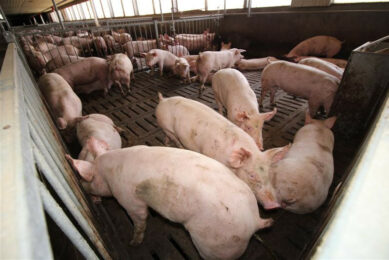African Swine Fever in maps: Problems not over yet

African Swine Fever (ASF) continues to be a problem on the Eastern borders of the European Union (EU). In the first four months of 2015, the World Organization for Animal Health (OIE) received a total of 135 new reports from cases in the EU – virtually all in wild boars. Here’s a quick analysis.
I choose to focus only on the European Union here, since from this area regular and transparent data are widely available.
History
As is well-known, the virus spread into the European Union at the beginning of 2014 and was since confirmed in wild boars in Estonia, Latvia, Lithuania and Poland.
The virus entered Europe in 2007 in Georgia, after which it spread to Armenia, Russia, Ukraine and Belarus.
Geographically the virus does not seem to have spread drastically within the EU in the first months of 2015; only the infected zone in the north of Latvia, around Valmiera, and protruding into the south of Estonia appears to have become slightly larger.
Poland saw its number of reports in 2015 almost double – from 32 in the whole of 2014, and 28 in the first four months of 2015. The situation, however, is closely monitored and geographically, the virus only occurs in the Podlaskie province. Again, the outbreaks all occurred in a very narrow strip close to the border with Belarus and this strip does not seem to have become larger.
2015 outbreaks
The 135 reports in 2015 were spread evenly over the months – 27 in January, 34 in February, 35 in March and 39 in April. With African Swine Fever thriving in warmer weather, there is an expectation that the countries have not seen the zenith of the outbreaks yet.
In total, ASF was reported 256 times in 2014, virtually all of them occurring in the last six months of the year, see Table 1 below. In the first six months of 2014, only 12 cases were reported to the OIE. With the current count in 2015, this creates a total of 391 cases being reported.
Latvia has been the country with the most OIE reports so far – 242 in total. Lithuania follows with 74 reports, Poland has had 60 so far and Estonia 15.
Carcasses
Most of the reports concern one or more carcasses of wild boars that died of ASF and were found by huntsmen, farmers or locals walking in the countryside. In 2015, only one case was discovered in a small farm in Poland on January 30, having seven pigs altogether.
Prof Dr Iwona Markowska-Daniel from the National Veterinary Research Institute in Pulawy, Poland, contributed a nice overview article for the latest edition of Pig Progress. She describes e.g. how public awareness for ASF has been increased in Poland by new campaigns. Asked how to explain the difference between the early months of 2014 and 2015, she responded that it is most likely a combination of the virus spreading as well as an increased awareness and stricter surveillance.
Finland
If the virus continues to be reported frequently in the EU over the summer months, the big question is where to expect these? On the basis of the development of the last few months, with the geographical spread inside the EU being relatively under control, one would expect these to be in the already infected areas.
What is happening outside the EU borders, however, is more difficult to grasp – in Russia, Belarus and Ukraine, monitoring might not be as intensive.
From all other EU countries, due to its long border with Russia, Finland might therefore have the most reason to be worried. The country, however, does apply very strict border protection to avoid the disease coming in. In addition, samples collected from wild boars from the eastern part of the country are continuously being monitored.
The Finnish Food Safety Authority (Evira) therefore mentions more than once on its website: The disease has never been found in Finland. I hope they can continue to do so.












